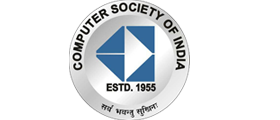Power Electronics Simulation Tools that are highly prevalent in which we have guided for more than 2500+ scholars with best results are discussed in this page. Together with major characteristics and applications, we suggest a thorough summary of few of the most frequently utilized power electronics simulation tools explicitly:
- MATLAB/Simulink
Summary: For designing, simulating, and examining power electronic models, MATLAB offers a robust platform when incorporated with Simulink.
Major Characteristics:
- Simulink Library: For power electronics elements, this tool offers a widespread library of blocks. Motor drives, converters, and inverters could be encompassed.
- Simscape Electrical: Generally, physical modeling of electrical models like power electronics could be facilitated with the support of this tool.
- Toolboxes: For system detection, control model, and signal processing, it offers expert toolboxes.
Potential Applications:
- Consider the simulation of AC-DC rectifiers, DC-DC converters, and inverters.
- For power electronics, focus on the control system model.
- Concentrate on harmonic exploration and power system durability.
- PLECS (Piecewise Linear Electrical Circuit Simulation)
Summary: Particularly, for the simulation of power electronics and electrical drive models, PLECS is modeled which is considered as a simulation tool.
Major Characteristics:
- Real-Time Simulation: For hardware-in-the-loop (HIL) analysis, PLECS contains the capability to execute real-time simulations.
- Electrical and Thermal Modeling: Electrical as well as thermal activities of power electronics elements could be simulated with the aid of this tool.
- PLECS Blockset: For improved modeling abilities, it focuses on incorporating with Simulink.
Potential Applications:
- Emphasize the model and investigation of motor drives and power converters.
- For power electronic devices, consider thermal management.
- Focus on real-time control system evaluation and validation.
- LTspice
Summary: LTspice is created by Analog Devices and is considered as a free of charge, high-effectiveness SPICE simulator. For simulating power electronics and analog circuits, it is generally utilized.
Major Characteristics:
- Component Library: Encompassing ICs, passive elements, and semiconductors, LTspice provides a widespread library of elements.
- Waveform Viewer: For examining simulation outcomes with numerous plotting choices, it offers modern tools.
- Thermal Analysis: In power electronics circuits, it is capable of simulating impacts of thermal.
Potential Applications:
- Power supplies and regulators have to be modeled and simulated.
- Focus on exploration of switching and linear regulators.
- Consider the simulation of analog and mixed-signal circuits.
- PSIM
Summary: Particularly, for motor drive models and power electronics, PSIM is modeled which is examined as a simulation software. It is recognized for its acceleration as well as easy utilization.
Major Characteristics:
- Control Design: For modeling and assessing control methods, PSIM contributes incorporated tools.
- Multi-Domain Simulation: This tool is highly assistive for thermal, magnetic, and electrical simulations.
- Embedded Code Generation: For microcontrollers and DSPs, it produces code from the model in a straight manner.
Potential Applications:
- Consider the model and simulation of AC-DC converters, DC-DC converters, and inverters.
- In motor control models, emphasize advancement and evaluation.
- Focus on the simulation of renewable energy models such as wind and photovoltaic.
- PSCAD (Power Systems Computer-Aided Design)
Summary: To simulate power models and power electronics, PSCAD is a graphical software tool that is employed extensively. Generally, in study and business, it is utilized.
Major Characteristics:
- Electromagnetic Transients: In power models, PSCAD supports precise simulation of electromagnetic transients.
- Component Library: Regarding power system elements and devices, it provides a widespread library.
- Real-Time Simulation: For actual time simulation for HIL analysis, it contains suitable abilities.
Potential Applications:
- In power models, consider the simulation of power electronic devices.
- Mainly, in power networks, emphasize the exploration of transients and durability.
- Protection models ought to be modeled and assessed.
- ANSYS Simplorer
Summary: For modeling and examining complicated power electronics models, ANSYS Simplorer is employed which is a multi-domain simulation tool.
Major Characteristics:
- Multi-Domain Simulation: Typically, thermal, electrical, and mechanical simulations could be incorporated with the support of this tool.
- System-Level Design: Encompassing control models, it assists system-level model and exploration.
- Co-Simulation: For thorough investigation, this tool contains the ability to co-simulate with some other ANSYS tools.
Potential Applications:
- Power electronics models have to be modeled and improved.
- Focus on the simulation of incorporated models with power electronics and control.
- Specifically, in power electronics devices, consider multi-physics investigation.
- Multisim
Summary: Multisim is created by National Instruments. To model and assess analog, digital, and power electronics circuits, it is employed which is considered as a simulation software.
Major Characteristics:
- Intuitive Interface: For circuit design and simulation, Multisim is a user-friendly graphical interface.
- Component Library: Along with parametric data, it offers a broad library of elements.
- Integration: Mainly, for software and hardware co-simulation, it contains the ability for the consistent incorporation with NI LabVIEW.
Potential Applications:
- Analog and power electronics circuits have to be simulated.
- For training circuit models and exploration, it is beneficial for academic purposes.
- Focus on model advancement and evaluation.
- PowerWorld Simulator
Summary: For assisting power electronics analysis, PowerWorld Simulator is utilized which is a power system simulation software.
Major Characteristics:
- Interactive Environment: Generally, for simulating and examining power models, it offers a graphical interface.
- Load Flow and Stability: This tool is capable of providing innovative tools for transient analysis, load flow analysis, and stability.
- Visualization: For system effectiveness and flow of power, it contributes high-quality visualizations.
Potential Applications:
- In power models, consider the simulation of power electronics.
- Focus on transient analysis and stability of power networks.
- For explaining power electronics and power models, it is employed for academic purposes.
- COMSOL Multiphysics
Summary: Multi-physics modeling such as power electronics are enabled by the COMSOL Multiphysics which is examined as a simulation software.
Major Characteristics:
- Multi-Physics Simulation: Thermal mechanical, electrical, and fluid dynamics simulations are assisted by COMSOL Multiphysics.
- Customizable Models: This software contains the capability to enable the development of conventional systems and simulations.
- Simulation Interoperability: For innovative designing, it combines with MATLAB.
Potential Applications:
- In power electronics, it supports incorporated simulations of electrical and thermal situations.
- Heat sinks and cooling models have to be modeled and examined.
- For complicated power electronics devices, it supports multi-physics simulation.
Website: COMSOL Multiphysics
- JMAG
Summary: For electromagnetic field analysis, JMAG is a suitable simulation software. In power electronics and motor design, it is employed in an extensive manner.
Major Characteristics:
- Electromagnetic Analysis: The electromagnetic fields and forces can be simulated in a precise manner.
- Thermal Analysis: In power electronics, it provides incorporated tools for thermal management.
- Co-Simulation: For thorough exploration, this tool assists co-simulation with some other tools.
Potential Applications:
- Power electronics elements such as transformers and inductors ought to be modeled and explored.
- For power electronics models, focus on motor design and improvement.
- Consider electromagnetic and thermal investigation of power electronics devices.
- PSpice
Summary: For simulating analog and mixed-signal circuits such as power electronics, PSpice is employed which is a SPICE-based simulation software.
Major Characteristics:
- Mixed-Mode Simulation: For analog and digital co-simulation, PSpice offers assistance.
- Advanced Analysis: Typically, for DC, AC, transient, and Monte Carlo analysis, it provides valuable tools.
- Component Models: For power electronics elements, it contributes to a widespread library of frameworks.
Potential Applications:
- Consider the simulation of power supplies and converter circuits.
- Analog and digital integrated circuits have to be investigated.
- Focus on the model and assessment of mixed-signal circuits with power electronics.
- ETAP
Summary: For power electronics simulation, ETAP encompasses effective tools. It is referred to as an electrical power system analysis and design software.
Major Characteristics:
- Integrated Environment: Specifically, for power system design, analysis, and function, ETAP provides extensive tools.
- Transient Analysis: For power electronics, it assists transient and dynamic simulations.
- Real-Time Simulation: Mainly, for power system management and security, it contains the ability of actual time simulation.
Potential Applications:
- In power models, focus on the simulation of power electronics.
- Electrical power networks have to be modeled and explored.
- Focus on real-time tracking and management of power models.
- DIgSILENT PowerFactory
Summary: Power electronics simulation is assisted by PowerFactory which is a power system analysis software.
Major Characteristics:
- Integrated Analysis: For flow of load, stability, and transient analysis, it provides efficient tools.
- Custom Models: Typically, for power electronics elements, it enables custom modeling.
- Grid Integration: The incorporation of power electronics with the grid can be simulated.
Potential Applications:
- In power models, concentrate on the exploration of power electronics.
- Grid-connected power electronics must be modeled and evaluated.
- Focus on the transient analysis and stability of power networks with power electronics.
How to simulate power electronics projects using simulation tools
The process of simulating power electronics projects with the support of simulation tools is considered as challenging as well as intriguing. Through the utilization of few prevalent simulation tools like LTspice, MATLAB/Simulink, and PLECS, we offer a procedural instruction based on how to simulate power electronics projects in an effective manner:
- Explain the Project Range and Goals
- Recognize the Issue: The power electronics model or element that we intend to simulate must be explained in an explicit manner. Generally, a DC-DC converter motor drive, inverter, etc., could be encompassed.
- Determine Goals: Our goal to attain with the simulation has to be fixed. It could be the process of improving effectiveness, examining efficiency, or assessing control policies.
- Choose the Suitable Simulation Tool
- MATLAB/Simulink: For complicated system modeling such as control models and multi-domain simulations, these are considered as perfect.
- PLECS: By emphasizing easy utilization and effectiveness, PLECS is excellent for power electronics simulations.
- LTspice: With a concentration on analog and power electronics, this tool is applicable for circuit-level simulations.
- Collect Essential Data and Metrics
- Component Descriptions: Based on the elements like capacitors, switches, resistors, semiconductor devices, and inductors, we plan to gather data.
- System Parameters: Generally, environmental aspects, input situations, and load features ought to be explained explicitly.
- Control Metrics: On the basis of control policies and methods, it is significant to collect data whenever it is appropriate.
- Develop the Simulation Model
Utilizing MATLAB/Simulink
Step 1: Open Simulink and Construct a Novel Model
- To begin Simulink, we intend to open MATLAB and type simulink.
- A novel blank model ought to be developed.
Step 2: Append Power Electronics Elements
- It is advisable to open the Simulink Library Browser.
- Then we have to go to Simscape > Simscape Electrical > Specialized Power Systems.
- Generally, elements like switches, DC-DC converters, and inverters should be dragged and dropped into the workspace.
Step 3: Arrange Elements
- To determine the metrics of elements such as capacitance, switching frequency, and inductance, our team aims to double-click every element.
- As a means to explain input situations, it is beneficial to employ Current Sources and Voltage Sources.
Step 4: Append Control Systems
- We have to go to Simulink > Continuous and Discrete libraries.
- Typically, Logic Blocks, PID Controllers, and some other control components must be included.
- The control blocks ought to be linked to the power electronics elements.
Step 5: Link Elements
- In order to link various segments of the model, we focus on utilizing Signal Routing blocks.
- Generally, power and control signals are transmitted in a proper manner. The process of assuring this is examined as crucial.
Step 6: Configure Simulation Parameters
- It is significant to click on Simulation > Model Configuration Parameters.
- The simulation time and solver type such as ode45 must be determined.
Instance MATLAB Code for DC-DC Converter Simulation
% Define parameters
Vin = 12; % Input voltage (V)
Vout = 5; % Desired output voltage (V)
Rload = 10; % Load resistance (Ohms)
% Create model and add components
model = ‘DCDC_Converter’;
open_system(new_system(model));
add_block(‘simulink/Commonly Used Blocks/Constant’, [model ‘/Vin’], ‘Value’, ’12’, ‘Position’, [100, 100, 120, 120]);
add_block(‘simulink/Commonly Used Blocks/Scope’, [model ‘/Scope’], ‘Position’, [400, 100, 450, 150]);
% Add and configure converter components
add_block(‘simscapelib/Power Systems/Power Electronics/Ideal Switch’, [model ‘/Switch’], ‘Position’, [200, 100, 250, 150]);
add_block(‘simscapelib/Power Systems/Power Electronics/Voltage Measurement’, [model ‘/Vout_Measure’], ‘Position’, [300, 100, 350, 150]);
% Connect components
add_line(model, ‘Vin/1’, ‘Switch/1’);
add_line(model, ‘Switch/1’, ‘Vout_Measure/1’);
add_line(model, ‘Vout_Measure/1’, ‘Scope/1’);
% Run simulation
set_param(model, ‘StopTime’, ‘0.1’);
sim(model);
Utilizing PLECS
Step 1: Open PLECS and Construct a Novel Circuit
- Initially, PLECS ought to be opened. Then, focus on developing a novel circuit layout.
Step 2: Append Power Electronics Elements
- Elements from the Components Library must be dragged. It could involve switches, converters, and inverters.
Step 3: Set Up Elements
- As a means to determine metrics such as component values and switching frequency, we plan to double-click on elements.
Step 4: Execute Control Systems
- From the control library, it is significant to include control elements such as Logic Gates and comparators.
- The control blocks should be linked to the primary circuit.
Step 5: Link Elements
- As a means to link elements and create the circuit, our team focuses on employing wires.
- Input and output links are created in a proper manner. The process of assuring this is crucial.
Step 6: Configure Simulation Parameters
- It is appreciable to click on Simulation > Simulation Parameters.
- The solver scenarios and simulation time has to be determined.
Instance PLECS Circuit Configuration
- In PLECS, our team intends to construct a novel circuit layout.
- A DC-DC converter from the library has to be included.
- It is significant to link a resistive load and a voltage source.
- The control logic and switching frequency should be arranged.
- In order to examine output voltage and current, we plan to execute the simulation.
Utilizing LTspice
Step 1: Open LTspice and Construct a New Schematic
- It is approachable to open LTspice. A novel schematic document must be developed.
Step 2: Append Power Electronics Components
- To locate elements such as capacitors, MOSFETs, diodes, and inductors, we aim to employ the Component Selector.
Step 3: Set Up Elements
- Generally, to determine metrics like switching features, resistance, and capacitance, it is significant to right-click on every element.
Step 4: Append Control Elements
- Control components such as Pulse Generators and Voltage Sources must be deployed.
- These ought to be linked to the gate terminals of MSOFETs or some other switching devices.
Step 5: Link Elements
- In order to link elements, it is beneficial to employ wires. Focus on attaining the circuit.
Step 6: Configure Simulation Parameters
- We plan to select Edit > Simulation Command.
- The kind of analysis such as AC sweep, transient, and simulation time should be determined.
Instance LTspice Simulation Configuration
- In LTspice, our team aims to open a novel circuit layout.
- A voltage source, inductor, MOSFET, and capacitor have to be deployed.
- For switching, offer a pulse waveform through determining the voltage source.
- As a means to examine voltage and current waveforms, it is significant to execute a transient analysis.
- Execute the Simulation
- Determine Preliminary Situations: Whenever required, we intend to explain preliminary currents and voltages.
- Select Analysis Kind: The kinds of analysis like transient or steady-state must be chosen.
- Execute Simulation: The simulation ought to be implemented. For indications or faults, it is approachable to track advancement.
- Examine the Outcomes
- Employ Scope and Display Blocks: Through the utilization of data display blocks or scopes, we focus on exhibiting real-time outcomes.
- Post-Processing: For thorough exploration, it is beneficial to employ in-built tools or MATLAB scripts.
- Contrast Outcomes: In opposition to conceptual computations or empirical data, our team plans to verify simulation outcomes.
Instance MATLAB Code for Post –Processing
% Load simulation results
load(‘simresults.mat’);
% Plot output voltage
figure;
plot(simresults.time, simresults.Vout);
xlabel(‘Time (s)’);
ylabel(‘Output Voltage (V)’);
title(‘Output Voltage vs Time’);
- Improve the Design
- Modify Parameters: In order to reinforce effectiveness, we aim to alter control scenarios or component values.
- Execute Parametric Sweeps: On system performance, it is significant to investigate the impacts of differing metrics.
- Repeat: For improving the model, our team focuses on reiterating the simulation and analysis procedure.
- Verify and Record
- Contrast with Real Data: Whenever accessible, we intend to verify our simulation outcomes with empirical data.
- Document Results: Encompassing simulation arrangement, outcomes, and conclusions, a thorough document should be created.
- Share Outcomes: For suggestions, it is advisable to disclose our results with participants or mentors.
- Instance Projects and Tools
Below are few instance projects for power electronics simulation:
Project 1: Buck Converter Simulation
- Tool: MATLAB/Simulink
- Goal: To decrease a 12V input to 5V output, a buck converter must be modeled and simulated.
- Elements: MOSFET switch, load resistor, inductor, and capacitor.
- Simulation: As a means to examine switching performance and output voltage, it is significant to execute a transient analysis.
Project 2: Grid-Tied Inverter Simulation
- Tool: PLECS
- Goal: For grid injection, transform DC from a solar panel to AC through modeling a grid-tied inverter.
- Elements: Grid connection, H-bridge inverter, filter.
- Simulation: Specifically, for assessing grid synchronization and power quality, focus on carrying out a steady-state analysis.
Project 3: DC Motor Drive Simulation
- Tool: LTspice
- Goal: For speed management, a DC motor drive should be simulated with a PWM control.
- Elements: Power switches, DC motor model, PWM controller.
- Simulation: To investigate motor acceleration and current reaction, it is significant to perform a transient analysis.
Through this article, we have provided numerous extensively employed power electronics simulation tools including its major characteristics and applications. As well as, detailed steps regarding how to simulate power electronics projects with the support of few prominent simulation tools like LTspice, MATLAB/Simulink, and PLECS are recommended by us in an obvious manner.
Power Electronics Simulation Tools Topics
Power Electronics Simulation Tools Topics which we carried out latest projects for scholars are discussed below. We’re here to be your go-to solution. Just send a message to matlabsimulation.com, and we’ll offer you personalized support.
- Power Electronics Technology for Large-Scale Renewable Energy Generation
- Operation of a prototype microgrid system based on micro-sources quipped with fast-acting power electronics interfaces
- Comparison of supercapacitor and lithium-ion capacitor technologies for power electronics applications
- Thermal Management of the High-power Electronics in High Temperature Downhole Environment
- study of Dynamic Reconfigurable Processor for power electronics application
- AHigh performance FPGA controller for digital control of power electronics applications
- Design of auxiliary power supply for high voltage power electronics devices
- Training neural-network-based controller on distributed machine learning platform for power electronics systems
- Micro and Nano Scale Electric Machines and Applications of Power Electronics
- Logic-Based Methods for Intelligent Fault Diagnosis and Recovery in Power Electronics
- Research on High-frequency Resonance Mechanism and Active Harmonic Suppression Strategy of Power Systems with Power Electronics
- Self-learning laboratory set-up for teaching power electronics combining simulations and measurements
- Start-Up Scheme for Dual-Active-Bridge Based 10KV Power Electronics Transformer in PV Application
- Development of a Power Electronics Controller with RISC-V based Core for Security-Critical Applications
- New Design Concepts for PCB-Integration Technology in Power Electronics reducing Circuit Parasitics to a Minimum
- Accelerated Fatigue Testing and Lifetime Modelling of Solder Interconnects in Power Electronics
- Characterization of Wide Bandgap Semiconductor Devices for Cryogenically-Cooled Power Electronics in Aircraft Applications
- Modeling of Sensor Faults in Power Electronics Inverters and Impact Assessment on Power Quality
- Reliability of Laminated Bond Structure Using (Cu, Ni)/Sn TLP Bonding with Al Interlayer for High Temperature Power Electronics Packaging
- Overview of Current Thermal Management of Automotive Power Electronics for Traction Purposes and Future Directions












